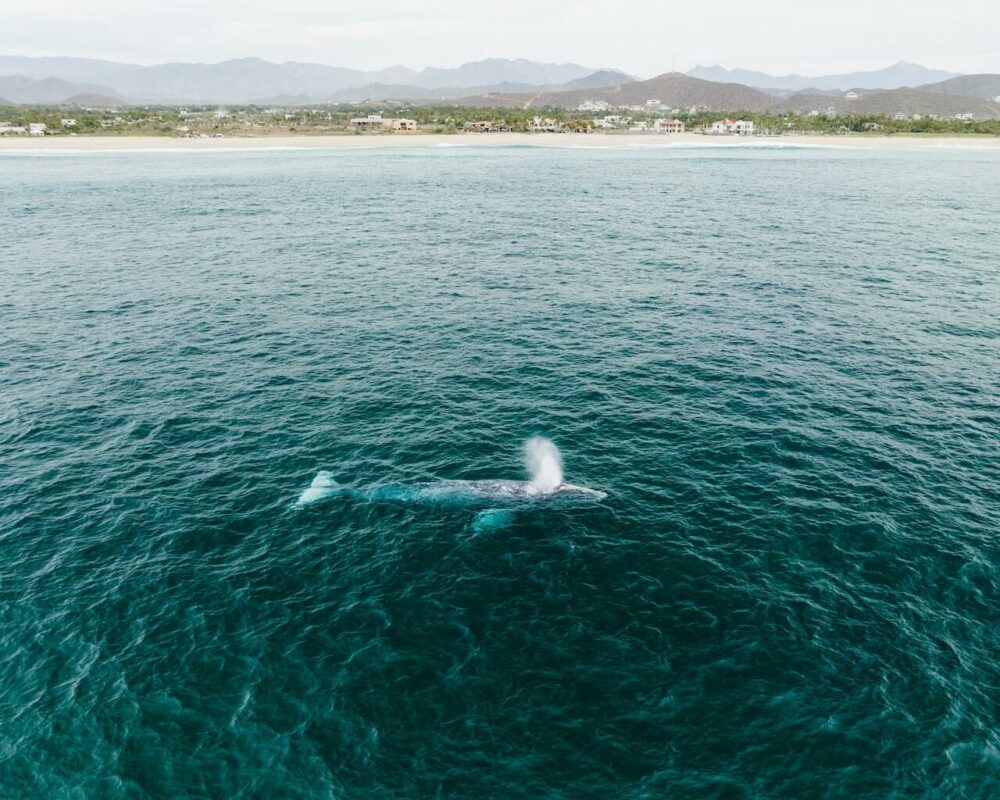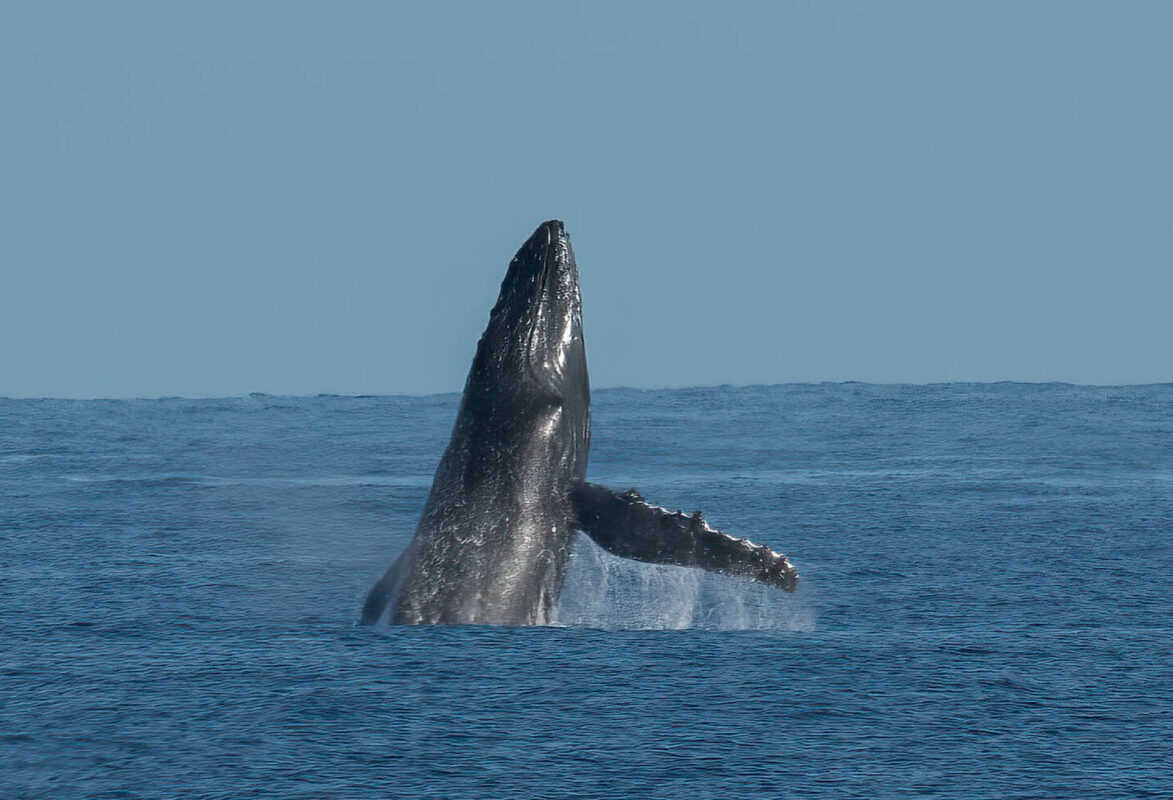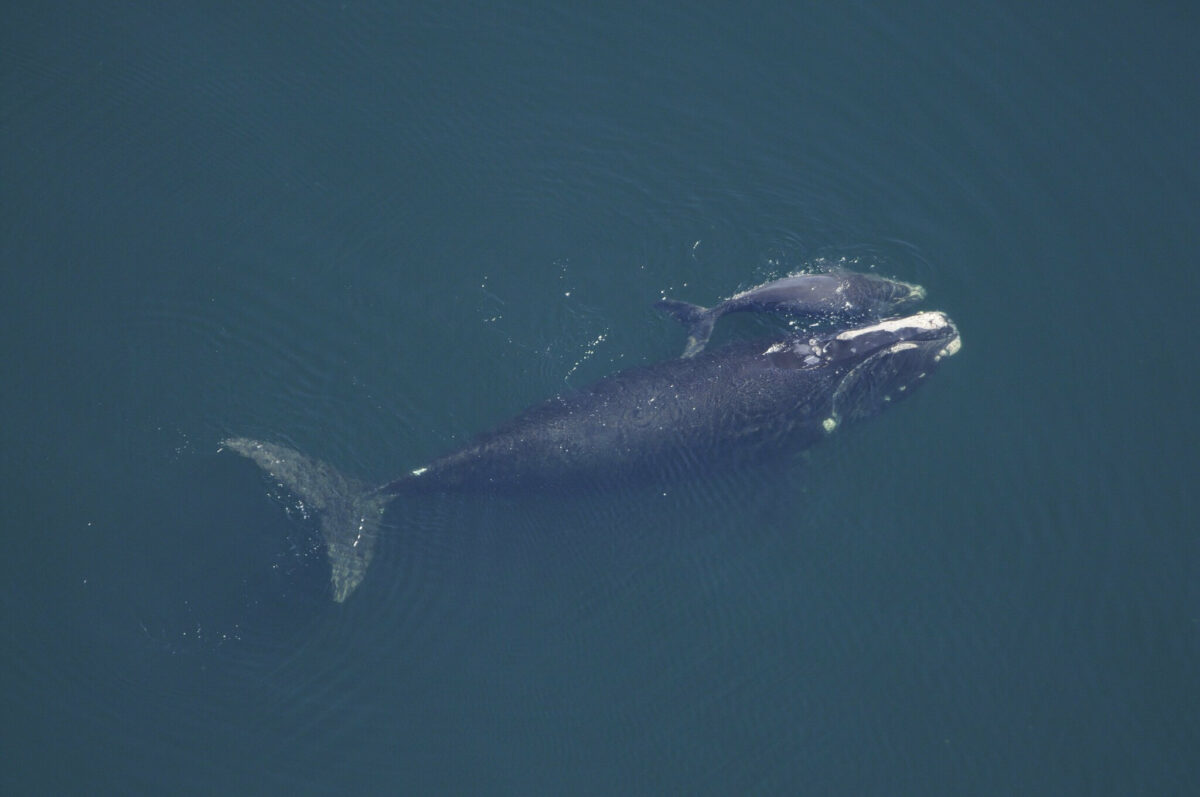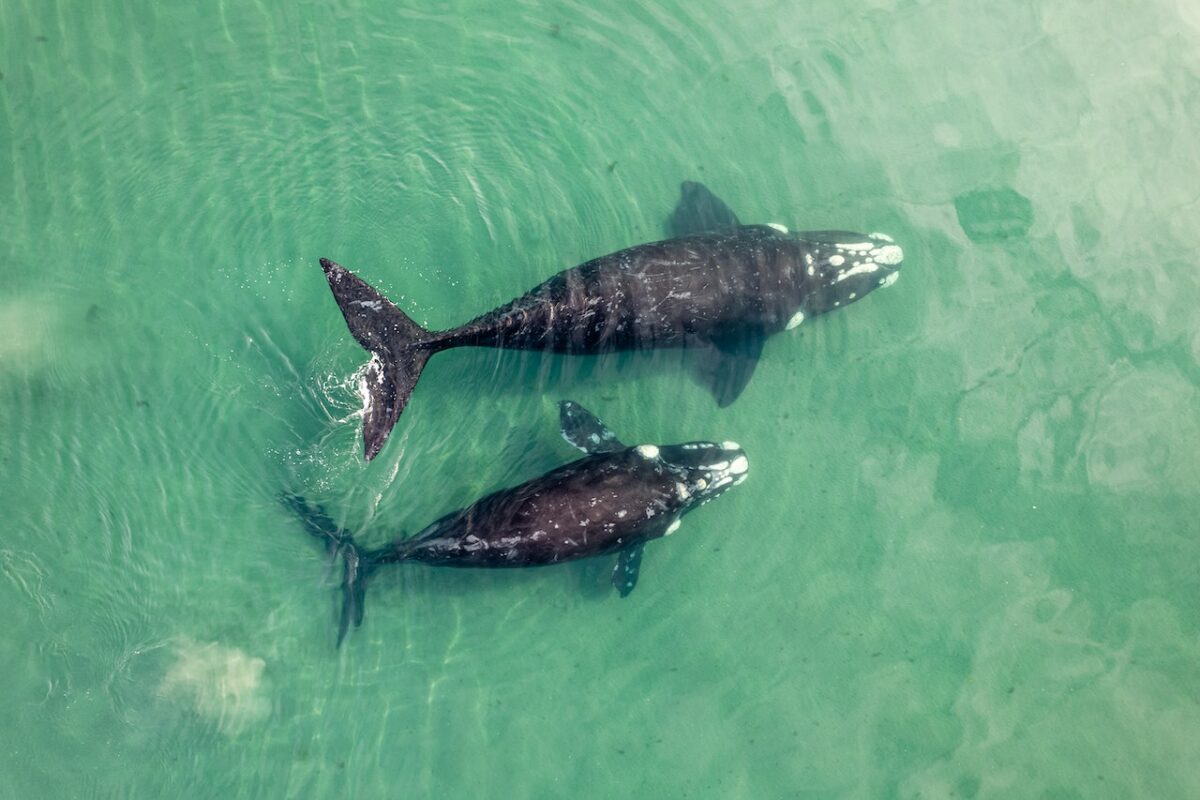Whales are some of the largest animals to have ever roamed the earth, with some species weighing as much as 150,000kg and being the length of three school buses.
These fascinating animals have captivated the attention of humans for decades due to their size, behaviors, and curiosity.
Whilst there’s still a lot to learn about whales as some areas of their lives still remain a mystery, what is understood is how they give birth.
Do whales lay eggs is a question that has puzzled people for centuries, and even today many are still unsure of how whales actually give birth.
That’s why in this post, we’re going to explore the truth behind this question and delve into the world of whales and their reproductive biology.
So let’s get to it…
Do Whales Lay Eggs?
No, whales do not lay eggs. Whales are marine mammals, and like all mammals, they give birth to live young that grows inside of the mother’s womb.
People often get confused as they believe whales are similar to fish, but in truth, they are a completely different group of animals and are actually not like fish at all.
Fish lay eggs and have gills, whereas whales give live birth and have lungs as they are marine mammals.

Whales are part of a group of mammals called cetaceans alongside dolphins and porpoises, and cetaceans are unique among mammals in that they have fully adapted to life in the water.
That said, they still retain main of the characteristics of their land-dwelling ancestors which includes giving live birth.
The reproductive process of whales is similar to that of other mammals, with fertilization occurring internally and the developing fetus is nourished by the mother through a placenta.
How Do Whales Give Birth?
Whales are born just like any other mammal, which begins with a mating process that typically occurs in winter months when males compete for the right to mate with females.
Often only the strongest whales get to mate with a female, and they use a variety of techniques to attract a partner such as vocalizations, fighting with other males, and breaching.
Once the female has chosen a suitable partner, the two will mate in a ritual that can vary depending on the whale species.
Humpback whales, for example, compete in what’s known as a “competitive pod”, with up to 15 males swarming one female and staying close to her whilst swimming.
The male that can remain closest to her over a long period and fight off the other males wins access to mate with her.
Once the deed is done, the female whale will carry the developing fetus in her womb for between 10 and 18 months depending on the whale species.
Humpbacks typically carry their young for around 11 months, whereas the gestation period of orcas can be as long as 18 months.
When it’s time for the calf to be born, the mother will seek out warm, shallow waters that are calmer than the rough seas.
Birth often happens in protected lagoons or bays, such as the three bays in Baja, California.

Calves are usually born tail-first which stops them from drowning, then they will be held up towards the surface by Mom until they learn how to breathe through their blowhole.
Whale calves rely entirely on their mother for the first few months of their life, but thanks to the nourishing milk that Mom produces, they grow incredibly quickly.
Once the calf starts to gain confidence in the ocean and is strong enough to survive, it will venture off on its own and take on the deep blue by itself, usually after around 9 months or so.
Why Do Whales Give Live Birth?
Whales give live birth because they are mammals, and like all mammals, they have evolved to produce live young over millions of years.
Despite living in the ocean, whales have adapted perfectly to life in the water and are therefore able to thrive in ocean habitats.
Giving birth to live young also has many benefits for whales, including being able to ensure the safety of their young by keeping it in the mother’s womb.
This allows the youngster to stay safe against predators and other threats and gives the calf the best chances of survival when it is eventually born.
Whale calves can be as long as 23 feet in length when they are born, which is much larger than most other marine animals.
This means that as soon as they are born they are too big to mess with.
Live birth also allows the mother to have greater control over the development of the calf as she can adjust her milk production to meet the specific needs of her young.
If the calf is underdeveloped, she can produce more milk which can help the calf grow and vice versa.
It’s clear to see that whales giving live birth makes much more sense for these ocean giants and allows them the greatest chances of survival as opposed to laying eggs.
Do Any Whales Lay Eggs?
Nope, all whale species give live birth. There isn’t a single whale species that lay eggs, as they haven’t evolved to give birth this way.
Whilst laying eggs does work for many marine animals such as fish and sea turtles, it’s not an effective way for whales to give birth and is one that isn’t possible due to them being marine mammals.

Whales have evolved over millions of years to live in the ocean and have evolved unique reproductive strategies that ensure the safety of their calves.
Wrapping Up
In summary, NO, whales DO NOT lay eggs as they are marine mammals that have not evolved to do so.
Instead, they give live birth and nourish their young in the mother’s womb which allows them to grow big and strong enough to be safe from predators as soon as they are born.
The reproductive process of whales involves internal fertilization, with the developing fetus being nourished by the mother until it’s time for the youngster to be born.
Whilst there are some areas of whales’ biology that are not yet understood, their reproductive process is not one of them, and researches have done a great job documenting and educating the public on this.
Thanks for taking the time to read this post today and learn more about how whales give birth.
See you in the next one!

Hi, I’m George – the founder of MarinePatch. I created this blog as marine wildlife has been my passion for many years. I’ve spent over a decade in the marine wildlife industry and spent years out in the field conducting research. In today’s modern world, an online blog is the best place for me to share my findings and reach as many people as possible to help educate and inspire others. Enjoy your time here and you’re welcome back anytime!

